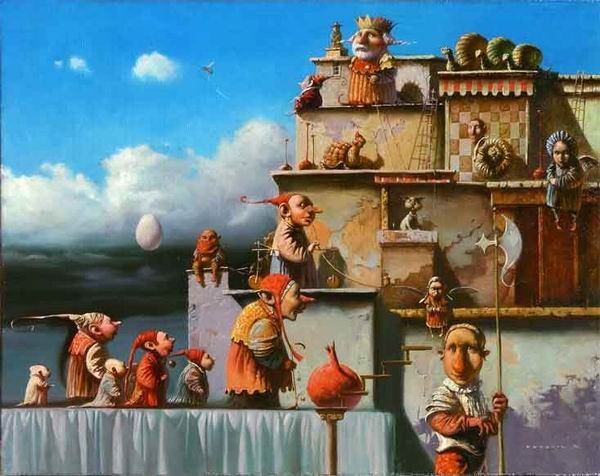
Chess Illusions vs Harsh Reality
Constructing air castles in a dream world
We saw how Don Quixote's strategies were often misaligned with reality, leading to comedic or tragic outcomes. We don't want these tragic and self-shattering things happen during chess games we play, yet...
We often have ideal scenarios or strategies we dream of executing on the chessboard. These could be perfect sequences of moves leading to a checkmate. We may also aim for some strategic setups (these plans might involve controlling the center, developing pieces optimally, or any ambition for long-term positional advantages).
Unfortunately, our idealism many a time clashes with reality. Much like "castles in the air," these "ideal" scenarios can be beautiful and aspirational but might not always align with the opponent's moves or the actual game state.
These aspirations can be disrupted by tactical necessities, blunders, or the opponent's aggressive play, reflecting how our dreams are confronted by harsh reality.
 Air Castles, by Herman Smorenburg (Dutch)
Air Castles, by Herman Smorenburg (Dutch)
Here are two instances where chess illusions or misperceptions contributed to a player's defeat. I borrowed the games from the excellent article by GM Gregory Serper, The Amazing Chess Illusion he posted in 2014.
Ragozin played 40...Rc7?? with the idea of getting rid of the annoying Rd7. It appeared as if he was blundering. However, this was an optical illusion. If White took the rook, Black could recapture with a fork. Here we witness two moments of tragicomedy. First, Ragozin's blunder. Then Ebralidze missed the opportunity and played 41.Rd5?? Ouch! (go read Serper's commentary here on how the entire tragicomedy involving even fans was unfolding in the playing hall).
Second example
Genrikh Kasparian was known for his prowess in chess composition. Here he attempted a beautiful, problem-like finish in a winning position. The idea was, if 54.Kxh3, then ...Qh4#. After 54.Bxh3 he planned ...Nf3#. However, he missed his knight was pinned. Yikes!
The game finely illustrates how the pursuit of a beautiful combination can lead to overlooking simpler, yet critical, tactical elements due to an illusion.
 The game of fools (art by Antonina Volodchenko)
The game of fools (art by Antonina Volodchenko)
Conclusion
Chess illusions often arise from the complexity of position and the pressure of the game. Players might see patterns or combinations that aren't there or fail to recognize threats due to the position's deceptive nature. These can be due to optical illusions where pieces appear to align in ways they don't or from psychological illusions where players overestimate their control or underestimate their opponent's threats.
The above examples show how chess illusions can lead to unexpected defeats by causing players to miss critical tactical elements or misread the board's state. They highlight the importance of careful analysis and not just relying on what initially seems apparent.
Yours truly,


